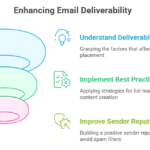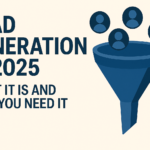Level up your business with team@relayzo.com
Level up your business with team@relayzo.com
Level up your business with team@relayzo.com
Level up your business with team@relayzo.com

In this modern era of technology, email marketing is still one of the most powerful tools that is left behind for engaging customers and making sure your messages actually reach the inbox. Experts note that your domain reputation is the behind-the-scenes factor that determines whether campaigns “fly or flop.”
A good domain reputation boosts your chances of landing in the inbox, whereas a poor reputation can immediately land you in spam. To increase your inbox rate, modern email platforms combine technical best practices (authentication, reputation management, clean lists, etc.) with smart infrastructure.
That’s where Relayzo + PowerMTA comes in: by pairing a high-performance MTA with intelligent automation, Relayzo helps email marketers follow email delivery best practices and keep sender reputation high.
At the core of Relayzo’s deliverability engine is PowerMTA (sometimes called PMTA), an enterprise-grade mail transfer agent designed for high-volume email. Moreover, PowerMTA makes it possible for a self-hosted email marketing platform to push millions of emails per hour. Not only this, but it also makes it ideal for large marketing and transactional campaigns.
What really sets PowerMTA apart is its granular control and analytics. For example, PowerMTA lets you specify settings at the domain, IP, or campaign level, like:
So you can improve your email sending patterns and maintain low bounce rates. It also provides real-time delivery analytics. This means you can monitor campaigns and optimize them whenever any error or bug occurs. PowerMTA supports all major email authentication methods (SPF, DKIM & DMARC).
This also establishes your credibility with mailbox providers and strengthens your sender reputation. And importantly, PowerMTA includes features like IP rotation and automatic warm-up that help you gradually introduce new sending IPs without tripping spam filters.
Relayzo makes PowerMTA easy to use and configure. Its platform provides a setup wizard that automatically generates an optimal pmta.conf configuration for your domains and IPs. In other words, Relayzo “provides you with an optimal PowerMTA wizard configuration for higher email deliverability and effective bounce handling”.
This means even non-technical marketers can leverage PowerMTA’s advanced features, such as:
In short, PowerMTA is the engine that delivers messages fast and reliably. While Relayzo adds the fuel injection and tuning to keep that engine running cleanly.
When you use a new or dormant IP address, mailbox providers don’t trust it right away. IP warm-up is the gradual increase of send volume on that IP to build a positive sender reputation. During warm-up, you might start by sending just a few dozen emails per day, then ramp up to hundreds and thousands over weeks.
This “trust-building” process is critical – it tells Gmail, Yahoo, and others that you’re a legitimate sender, not a sudden spam blast. As Twilio explains, warm-up “gradually establishes a positive sender reputation” by slowly increasing your volume. When an IP has a solid reputation, ISPs are much more likely to deliver your emails to the inbox instead of spam.
The benefits of a smart IP warm-up include:
Building positive reputation: Deliverability improves as ISPs learn to trust your IP (meaning more emails reach the inbox).
Avoiding blocklists: Starting slow “helps mitigate risk by building a solid sender reputation, reducing chances of blocklisting”.
Optimizing performance: You can monitor key metrics (opens, clicks & complaints) during warm-up and adjust pacing if problems appear.
Higher inbox placement: You will find a consistently high inbox placement rate (often 80–90%+) by the end of a proper cold email warm-up.
SPF is a DNS record that specifies which mail servers (IP addresses) are authorized to send email for your domain. You can also think of it as a postmaster’s list of allowed couriers means when an incoming email arrives, the recipient’s server looks up the sending domain’s SPF record to verify the source.
If the email comes from an IP not on that list that makes the servers will mark it as suspicious or reject it outright. In short, SPF helps in proving you are the legitimate source of your emails.
Relayzo ensures your SMTP setup includes a correct SPF record for each sending domain. When configuring PowerMTA (which acts as your SMTP server), Relayzo lets you define the envelope MAIL FROM domain and IP. These values must match the SPF DNS entry.
As you know, SPF authorizes where an email can be sent from. While the DKIM provides a cryptographic signature proving an email’s content is untampered and truly from your domain. DKIM works by adding a signature header to each email, encrypted with your private key.
Receiving servers fetch the corresponding public key (published in your DNS) to confirm that the signature matches. If a forwarded or altered email fails the check, it’s a red flag. Relayzo automates DKIM configuration for you.
During setup, Relayzo generates DKIM keys for each sending domain and configures PowerMTA to sign outgoing messages with them. Every email sent through PowerMTA then carries a valid DKIM signature.
DMARC builds on SPF and DKIM that means it can easily helps the receivers by telling them what to do if those checks fail. DMARC is a DNS policy record that specifies how strict your domain is about authentication. For example, you can ask ISPs to quarantine or reject any message that fails both SPF and DKIM alignment.
Also, DMARC “gives domain owners better control over their email use” by outlining how to handle unauthorized mail. As a result, DMARC aligns SPF and DKIM that enforces them in any case an email does not pass your DMARC checks and its policy instructs the server to drop it or send it to spam.
Relayzo helps you adopt DMARC by guiding you through publishing a DMARC record. You can create a DMARC policy (e.g. p=none, p=quarantine, or p=reject) that reflects your risk tolerance as you have a SPF and DKIM set up.
You know that the PowerMTA feature functions as your SMTP server in your self-hosted email marketing application. Not only this, but its underlying configuration directly impacts deliverability. So, make sure that you have proper SMTP settings, as if you don’t do that, all your emails will land in the recipient’s email spam folder as the filters consider them as fishy or untrusted emails.
The setting includes matching your DNS records and server hostname before starting your email marketing campaign. In essence, Relayzo handles the heavy lifting of PowerMTA setup (PowerMTA’s primary config file pmta.conf), while you verify that DNS is in sync. This clean SMTP configuration lays the foundation on which all other deliverability factors depend.
Finally, no deliverability checklist is complete without Inbox Placement Testing. This is the practice of sending your email to a set of test addresses (often called a seed list) across major providers (Gmail, Outlook, Yahoo, etc.) and measuring where each message lands.
According to deliverability experts, an Inbox Placement Test reveals exactly how your emails are treated. In other words, whether they’re delivered to the Primary Inbox, the Promotions tab, the Spam folder, or blocked altogether. It’s a practical way to validate all the optimizations above in the real world.
Achieving maximum inbox reach requires a multi-faceted approach. Relayzo + PowerMTA delivers on all fronts: PowerMTA’s high-performance SMTP engine ensures rapid, scalable sending, while Relayzo’s automation handles the nitty-gritty (warm-up scheduling, DNS setup, list cleaning, metric monitoring).
By following email delivery best practices, proper authentication (SPF/DKIM/DMARC), gradual IP warm-up, clean lists, engagement tracking, and infrastructure configuration. You can dramatically increase your inbox rate and grow your results.
As Relayzo’s CEO explains, the platform “provides an optimal PowerMTA configuration for higher email deliverability”. In other words, Relayzo turns PowerMTA into an intelligent deliverability engine, so your emails land in the inbox where they belong.



















Relayzo is a smart, reliable, and innovative solution tailored to meet all your email marketing needs. With its intuitive interface and powerful features, it helps you create, manage, and optimize campaigns effortlessly.
Copyright 2025 © Relayzo || Designed by Innovteams